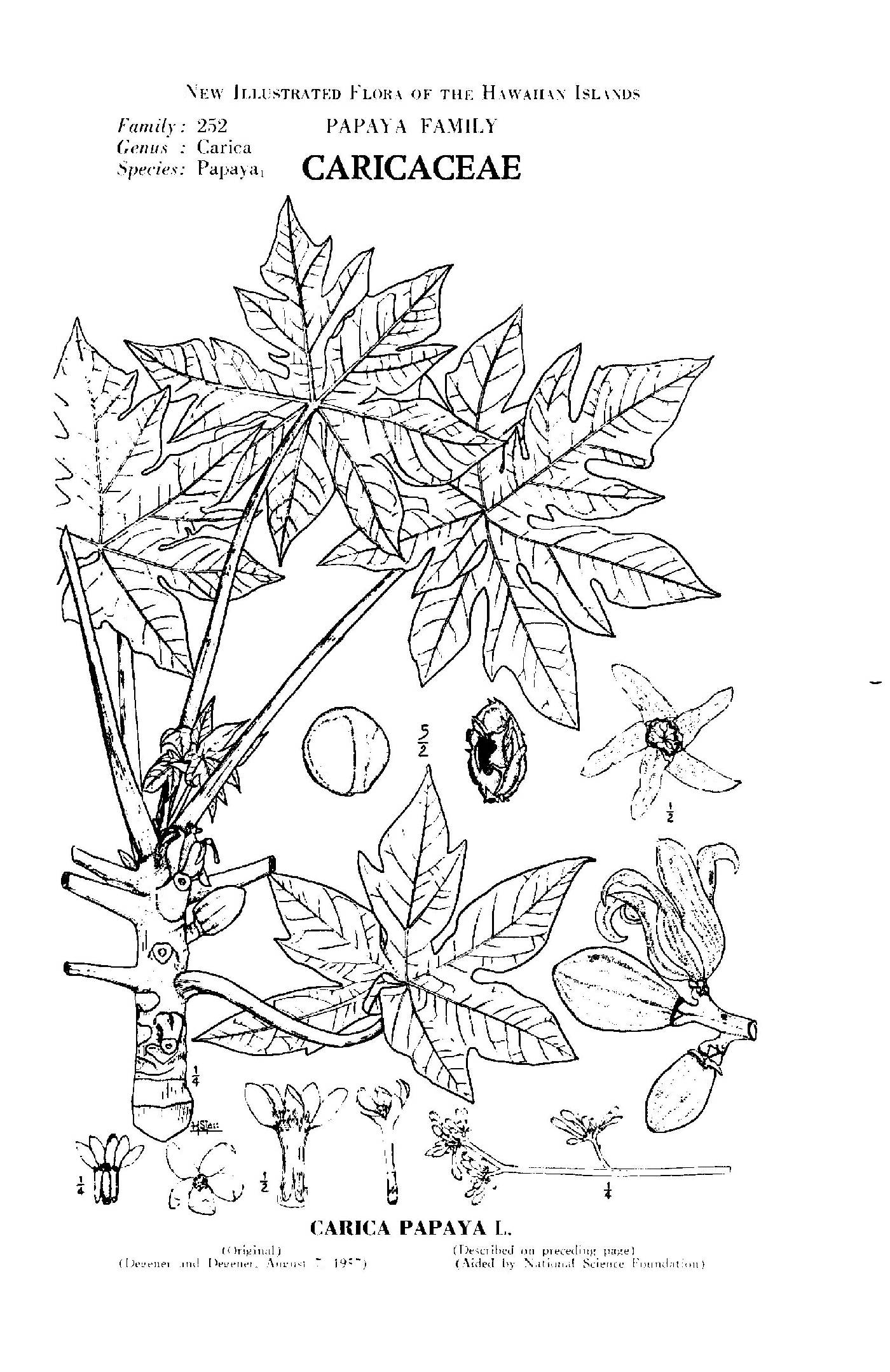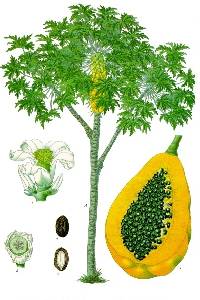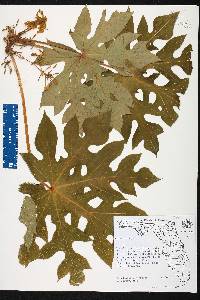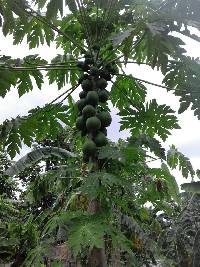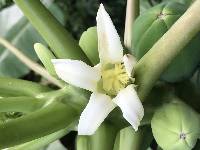
A tropical American plant, really a sort of huge herb rather than a tree; seldom over 10m tall (though one tree-seen near Kona, Hawaii, a few years ago-was at least 15m tall, was about 12-branched, and had a trunk over 1m thick.) In Guam papayas are quite common as naturalized plants in abandoned farm clearings. Generally they have small fruits, less than 5 em long in some cases, which have an insipid or even bitter taste and are quite worthless for fruits. The finest quality cultivars are rather scarce in Guam. Harmon (3892).
The sap contains a meat-digesting enzyme, the principal ingredient (papain) in commercial meat-tenderizers. The fruit are sought by fanihi (fruit-bats), pigeons, and perhaps other birds.
Carica papaya is native to tropical America, but is now distributed throughout the tropics. It was an early European introduction to Polynesia and quickly spread to nearly every high island in the region. Papaya is cultivated around houses and in plantations in Tonga for its delicious fruit, and often escapes to secondary forest and waste places. In addition to its value as food, various parts of the tree are employed in remedies learned mostly from the outside world.
The plant is a palm-like, soft-wooded, usually unbranched tree up to 10 m in height, with copious, milky latex. The simple, alternately arranged leaves are at the top of the trunk, and have a palmately 7‒11 lobed blade up to 30 cm or more in diameter, borne on a long petiole. The flowers are unisexual, with separate male and female trees; the male flowers are borne in hanging panicles, and have a cream-colored tubular corolla 2‒3 cm long; the female flowers are solitary and axillary, with a cream-colored corolla 4‒6 cm wide. The fruit is a large, variously shaped, yellow to orange berry containing a thick red to orange pulp, with numerous round black seeds attached to the inner wall.
Copyright ©2018. This sandbox portal development is powered by Symbiota software. Usage Policy.


